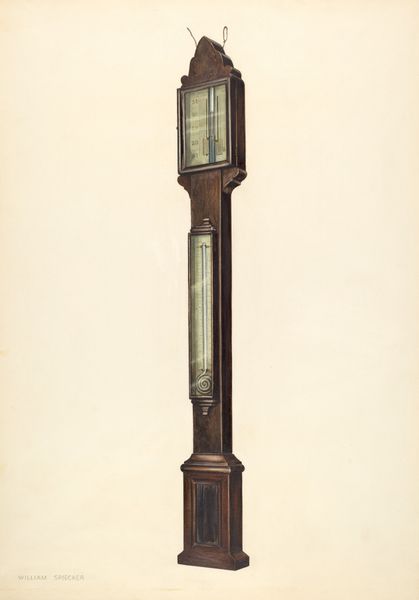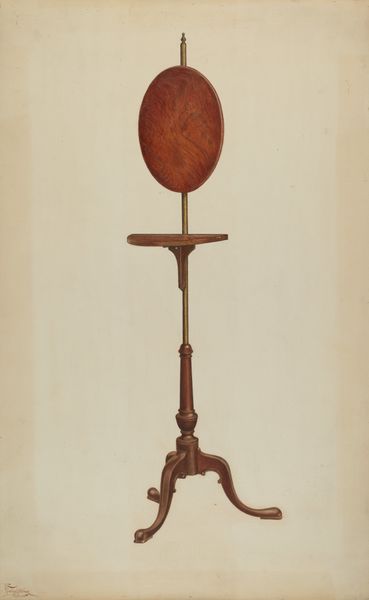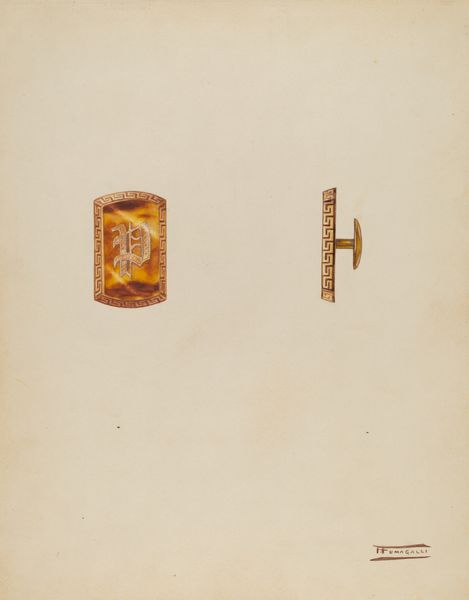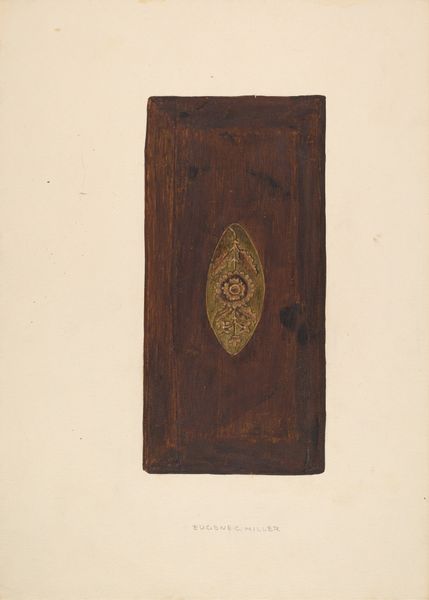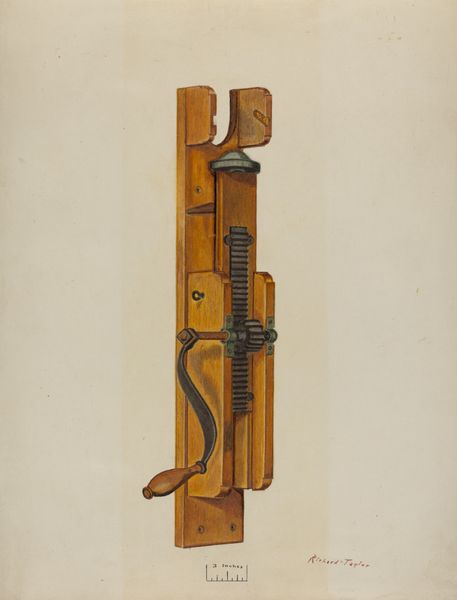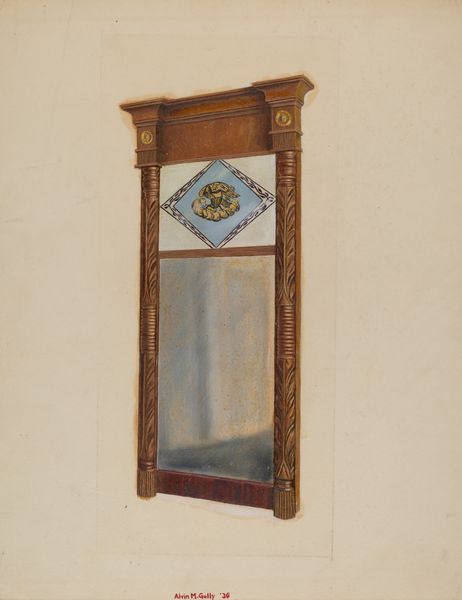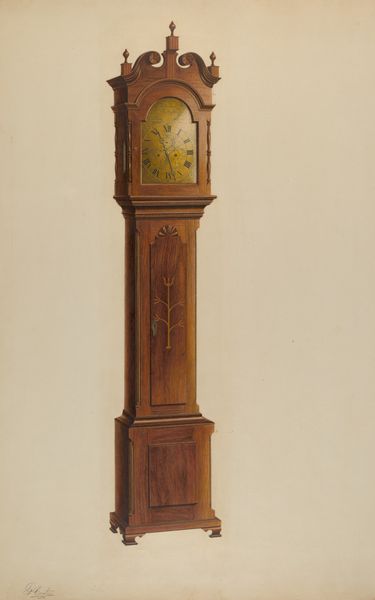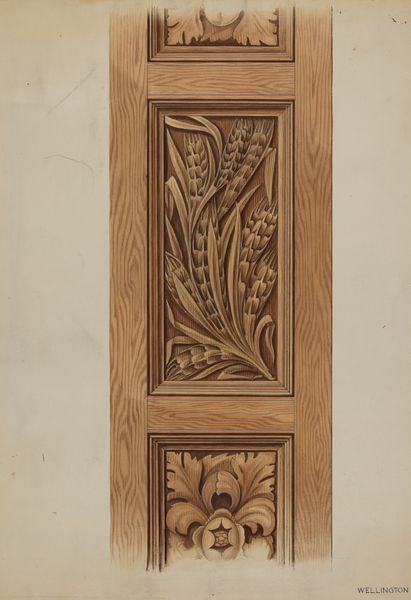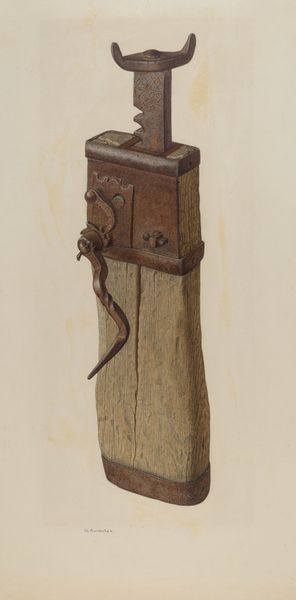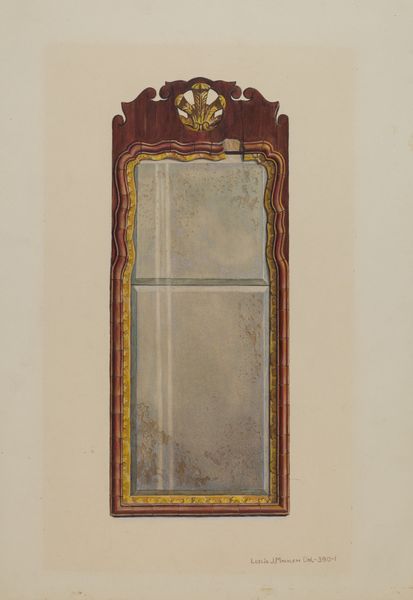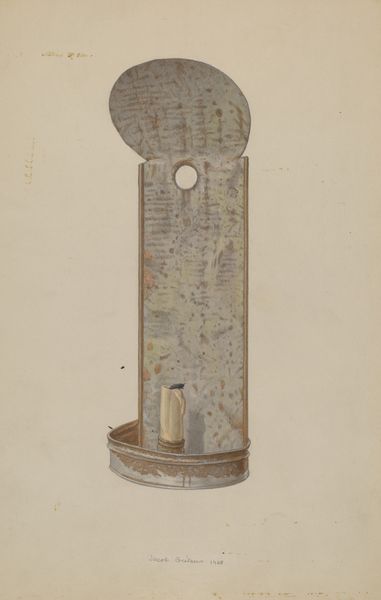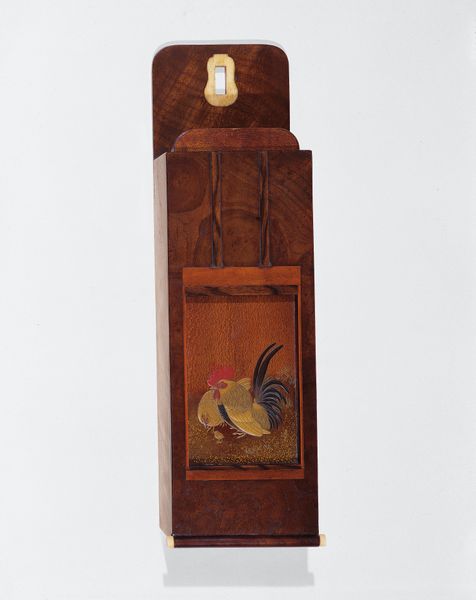
drawing, watercolor
#
drawing
#
watercolor
#
watercolor
#
realism
Dimensions: overall: 35.7 x 26.2 cm (14 1/16 x 10 5/16 in.)
Copyright: National Gallery of Art: CC0 1.0
Curator: Let’s turn our attention now to William Frank’s “Clock (Chronometer)” rendered in 1941 using watercolor and drawing techniques. What strikes you most when you look at this, Editor? Editor: There's something undeniably melancholic about it. The meticulous detail gives the impression of capturing something fleeting, a specific moment perhaps, right before time moves on and erases everything. It looks like an inventory, like evidence, perhaps of what he possessed or observed. Curator: Indeed, that delicate rendering almost feels like preservation. Think of the historical context—1941, the cusp of global conflict for the United States. To capture this rather mundane, domestic object at such a time speaks volumes. There were anxieties around industrialization that could relate to the precision this evokes. What do you think of that tension, the intersection of art and industry? Editor: Absolutely. Clocks were never simply time-telling devices, they symbolize societal shifts in work ethics and personal life under capitalist modernity. Think about whose time counts, and whose is stolen, especially in periods of global strife. What statement is Frank trying to make by immortalizing this particular model of a clock on paper? Curator: Perhaps there is commentary, here, of working-class anxieties concerning automation. Note the detail in this image of the clock—an everyday consumer good made precious through meticulous artistic technique. It is worth thinking about the place of pride it had, where someone felt like this domestic good had value in their own lives that it was worth preserving as an aesthetic object. Editor: Looking at the full rendering with the second, non-exposed clock, reminds me of our fraught relationship with representation and imitation. In philosophy, art imitates nature, but how much does reality, like the making of this artwork itself, attempt to mimic other types of reproductions such as industry itself? Perhaps it’s about making the intangible tangible during war. Curator: Yes, the copy, in this case, could reinforce themes of reality versus representation, adding more depth to its emotional pull. A way to take a simple domestic object, one tied inherently to commerce and labor and give it meaning for future generations during and after an especially anxious time in history. Editor: Seeing this, I realize there is so much potential in objects that appear to tell time—they invite us to reconsider the time outside of themselves in our memories. It certainly has for me today. Curator: I agree completely, reflecting on Frank's work alongside you really does make you appreciate the power that domestic objects have when it comes to encapsulating cultural change and emotional experiences.
Comments
No comments
Be the first to comment and join the conversation on the ultimate creative platform.

